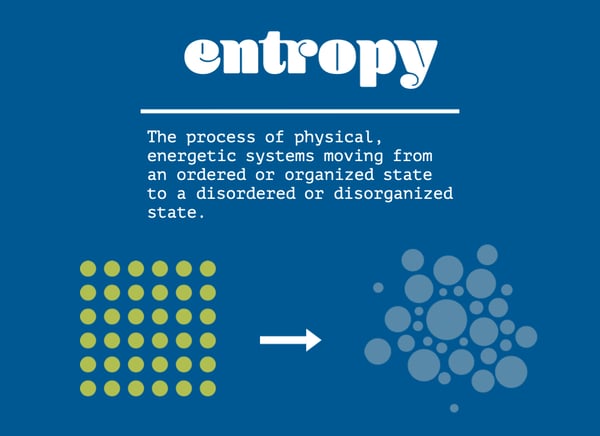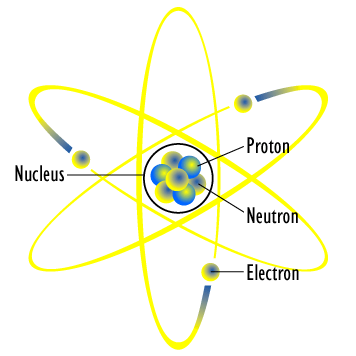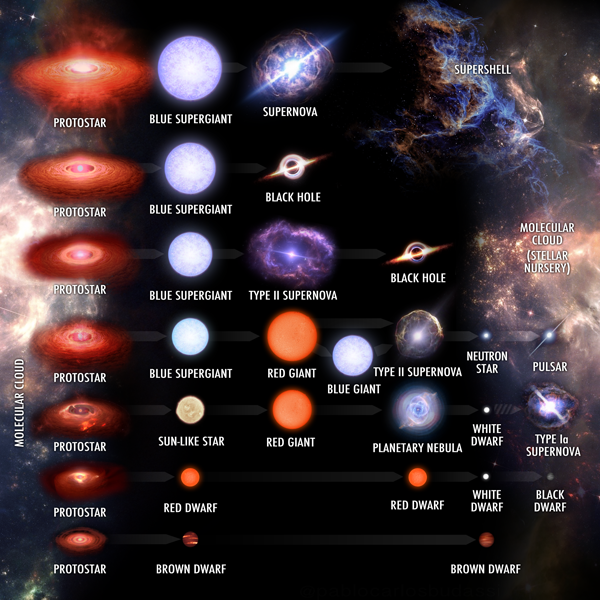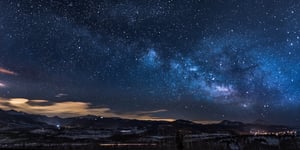In his article, “Evidence of God from Contemporary Science & Philosophy,” Father Spitzer presents the argument that the universe had a beginning and had to have come from something that is not a physical reality (i.e., that it had to have a transcendent cause).
He also points to the reasonable assumption that the universe cannot cause or even explain its own existence. Known as the fine-tuning argument, it goes like this:
- In order for life to exist at all, the universe has to meet certain conditions.
- Many of these conditions are extraordinarily improbable.
- Their improbability is so large, in fact, that we cannot reasonably attribute their existence to pure chance.
- So, it's reasonable to attribute the conditions to supernatural design.
The fine-tuning argument is often a topic for debate. On the one hand are those who hold that a purely material universe caused itself and needs no further explanation for its origin. On the other hand are those who find the materialistic view insufficient to explain the universe and are willing to grant the existence of a cause outside the universe.
Whichever side of the argument you are on, it's important to be aware of these examples of a fine-tuned universe.
Our first example is entropy and how our universe has the right amount of it.
Fine-Tuning Example #1: Our Low-entropy Universe
According to the second law of thermodynamics, the entropy of the universe is increasing over time. But what exactly does this mean?
This law means that the energy of the universe is being transferred and thus coming closer and closer to equilibrium.

You're already familiar with many cases of energy-seeking equilibrium. Imagine dropping an ice cube into a glass of water. Since the water has more energy than the ice, energy flows from the water to the ice and melts it. Once the ice is completely melted, the water's energy is in equilibrium—there's no reason for it to transfer.
Scientists expect the universe to reach a point of maximum entropy eventually. At that point, no more energy transfer will be possible. The energy will be distributed evenly without any possibility of further transfer.
But, if we imagine going further and further back in time, we would find the universe's entropy to be lower and lower. There would be more and more opportunities for energy to be transferred. If we got all the way back to the Big Bang, we would find that the universe had very low entropy indeed.
Now, how likely is it that our universe just happened to be a low entropy one? Highly unlikely. In fact, mathematical physicist Roger Penrose calculated that, out of 10^10^123 possible starting points for the universe, only one would have as low entropy as ours.
This is significant because a high-entropy universe would have the same amount of energy as a low-entropy universe. In a high entropy universe, however, that energy would already be spread out and close to equilibrium. It would not be available for the development of life forms.
 Roger Penrose, English mathematical physicist and Nobel Laureate in Physics / Cirone-Musi, Festival della Scienza, CC BY-SA 2.0
Roger Penrose, English mathematical physicist and Nobel Laureate in Physics / Cirone-Musi, Festival della Scienza, CC BY-SA 2.0
Does this improbability prove that supernatural design was at work? Not specifically, but it does mean that there had to be some very extraordinary reason why our universe is the way it is. (Penrose, who describes himself as an atheist, posited that there must have been a very special constraint at the Big Bang forcing it to result in low entropy.)
While this example is striking on its own, it becomes much more interesting when we take it together with the next example.
Fine-Tuning Example #2: The Gravitational Constant and the Weak Force Constant
This fine-tuning example starts with something called the cosmological constant, also known as the Hubble constant, which we abbreviate as Λ. Cosmologists use Λ in specific equations to explain why the universe's expansion is accelerating. According to our best current observations, it has a very small positive value.
The cosmological constant has a problem, however, which comes from quantum field theory.
To cut a long story short, quantum field theory implies that the vacuum of the universe contains energy of its own. This vacuum energy accelerates the expansion of the universe. So, it seems like a great candidate to explain the cosmological constant.
The problem is revealed by calculating just how much this energy accelerates the expansion of the universe. The equations for calculating this indicate that we should see a cosmological constant at least fifty orders of magnitude larger than the value we observe.
For reference, fifty orders of magnitude are as though you expected an inch and measured 1,578,282,282,282,282,282,282,282, 282,282,282,282,282,282,282 miles instead.
To resolve this problem, physicist Paul Davies suggests that the cosmological constant must actually have a negative value nearly as large as the value calculated from the vacuum energy. When the effect of the "true" cosmological constant is summed with the effect of the vacuum energy, they would nearly cancel each other out. This would result in the very slight positive value that we observe.
It's already very extraordinary that the cosmological constant should balance the vacuum energy so well. It gets more extraordinary, however, when we consider how the vacuum energy's contribution is calculated.
The equation involves two other universal constants, the gravitational constant (G) and the weak force constant (gw).
Paul Davies describes their contribution as follows:
"If G, or gw, differed from their actual values by even one part in 10^50, the precise balance against Λbare [the "true" cosmological constant] would be upset, and the structure of the universe would be drastically altered. ...If Λ were several orders of magnitude greater, the expansion of the universe would be explosive, and it is doubtful if galaxies could ever have formed against such a disruptive force. If Λ were negative, the explosion would be replaced by a catastrophic collapse of the universe. It is truly extraordinary that such dramatic effects would result from changes in the strength of either gravity, or the weak force, of less than one part in 10^50." -Paul Davies, Physicist
Once again, this extraordinariness does not strictly prove that supernatural design was at work. It does provide excellent food for thought, however.
Fine-Tuning Example #3: The Strong Nuclear Force Constant
You may recall that the nucleus is at the center of the atom and that each nucleus is composed of protons and neutrons. Protons have a positive electric charge, while neutrons are neutral.
 Diagram of an Atom / AG Caesar, CC BY-SA 4.0, via Wikimedia Commons
Diagram of an Atom / AG Caesar, CC BY-SA 4.0, via Wikimedia Commons
The number of protons in an atom determines what kind of element it is. If you look at a periodic table, you'll see that each element has a number associated with it. Hydrogen has 1, and Helium has 2, etc.
Now recall that similar electrically charged particles repulse each other. This raises a question: how can there be more than one proton in a nucleus? Since each proton is positively charged, the protons should repulse each other and split the nucleus apart.
To explain how the nucleus stays together, physicists have posited the strong force. The strength of the strong force is partially determined by the strong coupling constant. This constant is a fundamental value similar to the constants from our previous example.
Here, once again, fine-tuning raises its head. It turns out that a variation of only 2% in the strong force's constant would have catastrophic effects on the universe.
Walter Bradley explains the consequences as follows:
"A 2 percent reduction in the strong force and its associated constant would preclude the formation of nuclei with larger numbers of protons, making the formation of elements heavier than hydrogen impossible. On the other hand, if the strong force and associated constant were just 2 percent greater than it is, then all hydrogen would be converted to helium and heavier elements from the beginning, leaving the universe no water and no long-term fuel for the stars." -Walter Bradley
Fine-Tuning Example #4: Red Dwarfs and Blue Giants
While stars may look similar from where we stand, they come in many different varieties. Among them are blue giants and red dwarfs.
As the name implies, these are very different both in size and color, but they share a similarity: neither of them can support life. Red dwarfs produce relatively little light, not enough to support photosynthesis. Blue giants, on the other hand, put out too much radiation and are relatively short-lived, leaving too little time for life to develop.
 Different types of stars and their evolution tracks / Pablo Carlos Budassi, CC BY-SA 4.0
Different types of stars and their evolution tracks / Pablo Carlos Budassi, CC BY-SA 4.0
Fortunately for us, many stars are neither red dwarfs nor blue giants. Here is where the fine-tuning comes in. The ability for there to be different kinds of stars depends on a relationship between two universal constants. These are the gravitational constant (which has to do with gravity) and the fine-structure constant (which has to do with electromagnetism).
These constants are quite fundamental, so it's not surprising that they appear in equations that affect stars. What is more surprising is that the actual values of these constants are exquisitely balanced in precisely the only way that allows for the existence of stars like our sun. If gravity were slightly stronger or electromagnetism slightly weaker, all stars would be red dwarfs. If the opposite were true, all stars would be blue giants.
Either way, life would not be possible.
Fine-Tuning: What Can We Conclude?
Given all these examples, it’s fair to ask: what comes next? Do these examples provide evidence for a cause outside the universe, a designer or creator?
It’s a much-debated question and one that’s outside the scope of this blog post. Here, however, is one further question to consider.
Imagine that, while you’re on a hike, you pick up a small stone. Consider the odds of that particular stone being shaped and situated as it is. A whole host of forces went into its formation: volcanic activity, glaciers, wind, rain, etc. If you consider all the possibilities, it’s very unlikely that that particular rock should be shaped exactly as it was and placed on the path of your hike. It might have been weathered rather more, for example, or it might have landed 3 feet to the left of the path.
You would not, however, be in the least bit surprised by the stone. It’s extremely unlikely to be exactly the way that it is, but however, it ended up being would be just as unlikely.
Now suppose that you pick up a second stone, and you see that it’s shaped exactly like someone’s face. You would be surprised; you would never conclude that a variety of chance forces just happened to shape the stone in that particular way. Instead, you would assume that someone carved or molded it.
The question is: is the existence of life in our universe more like the first stone or more like the second?
For more on this topic, watch Fr. Spitzer of the Magis Center explain what monkeys and Shakespeare can teach us about fine-tuning:


